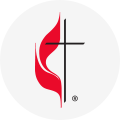Mobilizing Congregations Using a District Wide Approach
Most NCCUMC congregations are engaged in public schools through Congregations for Children (C4C), so it seems logical that this work should be extended to include advocating at the local school, school board, and county authorities levels for improvements in resources for schools. The overall intent is to help improve the provision of public education within a District by inviting congregations to advocate for improvements to yet-to be defined needs. The goal is to empower congregations to be engaged in advocacy work supporting local public schools.
Project Structure and Partners
The District will partner with UMAPS to implement the targeted goals and will create a steering team to manage the project. This team will include the following:
- The District Superintendent or his/her appointee
- A representative from the UMAPS Team
- A representative from the District C4C team
- A representative from the District Mission Strategy Team
- Congregational representatives as needed

Project Description
The project process will be as follows once a Steering Team is established.
- Conduct a survey of all United Methodist churches in the District to ascertain the specific level and type of engagement with public schools through C4C or other intentional approaches.
- Review the advocacy activities of all non-profit agencies currently engaged in public school advocacy in the District and develop ways to embrace and take advantage of collaborative efforts with them.
- Evaluate the data about UMC school engagement and the collective advocacy work done by others to ascertain the capacity of congregations to engage with public education and to discern appropriate advocacy opportunities.
- Invite selected congregations with active engagement with public schools to partner in this process as pilots. Each pilot would appoint a small congregational steering team as well.
- Organize proactive listening sessions with selected pilot schools and congregations to build a needs list for those schools.
- Conduct public workshops and listening sessions to promote further dialogue between education leaders and administrators, parents, public officials, and elected representatives.
- Engage with advocacy organizations within the counties covered by the District, build relationships with these organizations, and build collaborative advocacy strategies with them.
- Build and deliver advocacy training programs for small congregational groups to engage with school administration, school boards, and county commissioners.
- Maintain records of all relevant metrics that define the needs in the pilot schools.
- Monitor advocacy activities over a one year period.
- Evaluate all advocacy activity and results and make appropriate amendments to the approach for further deployment.
- Repeat all of the above until the advocacy work is sustained.
There are many issues and priorities for public education, and selecting the focus of any effort is essential to prevent burn-out. Understanding your congregation’s resource level to undertake this initiative is essential, so it is suggested that a study be done of the congregation to find out how many and which members have experience and skills to undertake education advocacy work. “Understanding Congregational Human Assets” is an excellent resource for this process.
